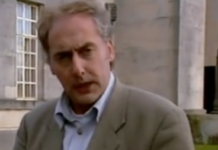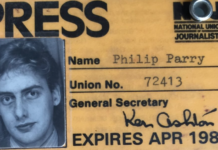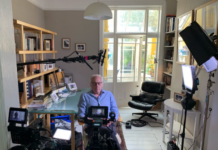- Programme not well produced… - 2nd January 2026
- Multi million pound Match of the Day! - 1st January 2026
- Wordy again part two - 31st December 2025
I don’t have an idea about where to begin, and I write about it professionally. On the one hand, the natural consequences of climate change seem increasingly severe and devastating. Just in the past two years, I’ve written about how global warming will probably cause more mega-droughts in Arizona and New Mexico; how dangerously sweltering summer days are three times likelier to occur today than they were in 1900; and how even slightly warmer oceans will destroy the Great Barrier Reef.
On the other hand, a strategy for addressing climate change is coming together. The cost of solar and wind energy are plunging worldwide; carmakers are promising to take more of their fleet electric, and the amount of carbon released into the atmosphere from human activity has stabilized over the past three years. Decarbonizing will be an arduous and difficult global project—but technological development and government policy are finally bringing it into the realm of the possible.
That’s the state of the world right now. There are three ongoing shifts and no easy way to synthesize them. The facts don’t lend themselves to an overwhelming vision. Instead, they suggest that the planet’s economic system is in the middle of a difficult and supremely important political battle with itself. As Brad Plumer, a New York Times climate reporter, tweeted last week: There are “two radically opposed visions of the future; [it’s] not yet clear which one will win out.”
It’s into that morass that this week’s New York magazine walks. In a widely shared article, David Wallace-Wells sketches the bleakest possible scenario for global warming. He warns of a planet so awash in greenhouse gas that Brooklyn’s heat waves will rival Bahrain’s. The breadbaskets of China and the United States will enter a debilitating and everlasting drought, he says. And millions of brains will so lack oxygen that they’ll slip into a carbon-induced confusion.
It’s a scary vision—which is okay, because climate change is scary. It is also an unusually specific and severe depiction of what global warming will do to the planet. And though Wallace-Wells makes it clear that he’s not predicting the future, only trying to spin out the consequences of the best available science today, it’s fair to ask: Is it realistic? Will this heat-wracked doomsday come to pass?
Many climate scientists and professional science communicators say no. Wallace-Wells’s article, they say, often flies beyond the realm of what researchers think is likely. I have to agree with them.
At key points in his piece, Wallace-Wells posits facts that mainstream climate science cannot support. In the introduction, he suggests that the world’s permafrost will belch all of its methane into the atmosphere as it melts, accelerating the planet’s warming in the decades to come. We don’t know everything about methane yet, but the picture does not seem this bleak. Melting permafrost will emit methane, and methane is an ultra-potent greenhouse gas, but scientists do not think so much it will escape in the coming century.
“The science on this is much more nuanced and doesn’t support the notion of a game-changing, planet-melting methane bomb,” writes Michael Mann, a climate scientist at Penn State, in a Facebook post. “It is unclear that much of this frozen methane can be readily mobilized by projected warming.”
This isn’t to say that his piece is worth discarding in its entirety. Wallace-Wells paints a vivid and frightening version of a doomed world. Many scientists just don’t think we live in that world—and they don’t think it’s helpful to tell people that we do.
Over the past decade, most researchers have trended away from climate doomsdayism. They cite research suggesting that people respond better to hopeful messages, not fatalistic ones; and they meticulously fact-check public descriptions of global warming, as watchful for unsupported exaggeration as they are for climate-change denial.
They do this not because they think that climate change will be peachy. They do it because they want to be exceptionally careful with facts for such a vital issue. And many of them, too, think that a climate-changed world will look less like a starved wasteland and more like our current home—just more unequal and more impoverished.
Climate change, they say, will not turn us into idiots before broiling us in our sleep. Instead, it will act as a kind of ecological reverse Robin Hood, stealing from the poor and giving to the rich. It will impoverish many of the poorest communities in the country—arrayed across the South and Southwest, and especially along the Gulf Coast—while increasing the fortunes of cities and suburbs on both of the coasts.
“This study—the climate equivalent of being informed that smoking carries serious risk of lung cancer—should be enough to motivate us,” says Katharine Hayhoe, an atmospheric scientist and professor of political science at Texas Tech University. “The NYMag article is the climate equivalent of being told that everyone in the world’s life will end in the most grisly, worst-case possible scenario if we keep on smoking.”
The Climate Impact Labs’ accounting is a much likelier view of what is “much more likely to occur than the doomsday scenario,” she added.
Other communicators reject Wallace-Wells’s approach for a third reason: He glosses over the many reasons that climate advocates now have hope. Many of these criticisms came not from researchers but from other climate communicators. “Through combo of exaggeration and hopelessness, [the NYMag piece] turns away those in the middle we need to persuade. It makes action harder,” tweeted Ramez Naam, a technologist and novelist. “We’ve made huge climate strides. Business-as-usual used to mean six or seven degrees Celsius or warming. Now it looks like three to four, and [it’s] trending down.”
I’m not so sure about this last angle. I have been writing about climate change nearly full-time for several years now. I don’t think journalists should frame the truth to better inspire people—that’s not our job.
But I vacillate considerably on the doom versus no-doom question. Consider what Wallace-Wells writes about climate change and war:
Researchers like Marshall Burke and Solomon Hsiang have managed to quantify some of the non-obvious relationships between temperature and violence: For every half-degree of warming, they say, societies will see between a 10 and 20 percent increase in the likelihood of armed conflict. In climate science, nothing is simple, but the arithmetic is harrowing: A planet five degrees warmer would have at least half again as many wars as we do today. Overall, social conflict could more than double this century.
That final sentence is simplistic; we cannot wield careful social science conclusions like an abacus. It is also too certain: While Burke and Hsiang have found links between conflict and climate change, another group of researchers from Oslo have found far weaker connections. They observe a link between natural disaster and war only when a country is divided by ethnicity.
Yet this is worrisome by itself. Consider the world that climate scientists say is more realistic: a place where sea levels cause mass migration within and without the developed world; where the economy is never great but isn’t in shambles either; where voters fear for their livelihoods and superpowers poke at each others’ weaknesses.
Does that world sound like a safe and secure place to live? Does it sound like a workable status quo? And how many small wars need to start in that world before they all fuse together? Who needs planet-killing methane burps when nine different countries have 15,000 nuclear weapons between them? In short, there are plenty of doomsday scenarios to worry about. They don’t need to be catastrophic on their face to induce catastrophe.










